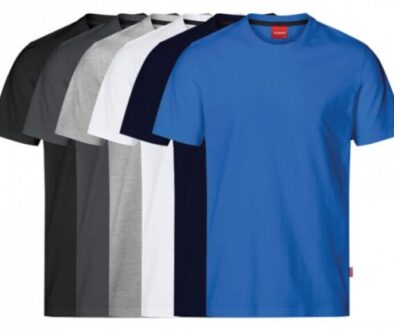The Beginners Wetsuit Guide
With so many options to choose from, choosing the right wetsuit can be hard. You’ll need a wetsuit that is both warm, yet flexible and comfortable.
This can be a quite challenging task, but don’t worry, here are some general recommendations when buying a new wetsuit. We bring you, the Beginners Wetsuit Guide.
How does a wetsuit work
The physics of a wetsuit is quite simple. Its mainly made from foamed neoprene and rubber, providing thermal insulation. When you enter the water wearing a wetsuit, a small amount of water fills the inside of the wetsuit and is trapped between the neoprene and your skin. The water heats up from the core temperature of your body, and since the water is insulated it keeps your skin warm.
Besides keeping your body warm, a wetsuit can have other practical functionalities. First and foremost, covering your body with neoprene protects your skin from the sun. It also protects your skin from the shallow reef, which is something that is often an underrated aspect of surfing.
Perhaps the most beneficial “side effect” of the wetsuit is that it keeps you floating. Please remember this, if you ever find yourself in a critical situation in the middle of the ocean, try to relax, and not use all of your energy and oxygen.
Stay calm, the wetsuit will prevent you from sinking
So next time you surf, try to float in the water without your board and see for yourself.
Wetsuit thickness
The most important factor when buying a wetsuit is the expected water temperature. There are a lot of other things to be considered, but wetsuit thickness should be the main focus because nothing is worse than freezing in the water.
The colder the water the thicker the wetsuit
Wetsuit thickness is measured in millimeters, but often a wetsuit has more than one number, for example, 5/4 mm. The first number represents the thickness of the torso (chest, belly, and back), and the second number represents the thickness of the arms and legs of the wetsuit.
The main reason why a wetsuit often is thicker in the torso is that the body generates “core” warmth in this area. Secondly, surfers don’t need much flexibility in this area of the body when surfing, so adding an extra layer of neoprene, doesn’t really limit your abilities in the water.
Wetsuit Thickness Guide
Here are some general recommendations:
- Water temperature (C) 18°-25° = 2/1 wetsuit temperature range
- Water temperature (C) 12°-17° = 3/2 wetsuit temperature range
- Water temperature (C) 8° – 11° = 4/3 wetsuit temperature range (with booties)
- Water temperature (C) below 7° = 6/5 hooded wetsuit temperature range (with booties and gloves)
The Right Fit
If you aren’t an experienced surfer, getting the right size and shape may be a bit tricky. Getting the perfect fit is both a matter of personal taste, comfort and efficiency, and if you haven´t developed a personal taste it’s literally impossible to know what to look for. Here are some pointers that may help you out.
First, if possible, go down to your local surf shop and try some suits. And please don’t try them on while wearing your birthday suit, others may buy the exact wetsuit after you rubbed chlamydia all over it. And don’t be afraid to ask for help.
If you buy via the internet always try to use the size charts. All wetsuit brands have different designs and standards, so make sure you know what the different size ranges actually mean. All humans have different bodies, so the more size varieties on offer, the better chance you’ll have of finding the design that suits your body perfectly.
Price
Wetsuits are like everything else, you often get what you pay for. I’m not saying a cheap wetsuit can’t do the job perfectly, but I personally prefer not to take any chances. I have been surfing in enough really crappy wetsuits to know the difference, and trust me, a good quality wetsuit is worth the extra bucks. So don’t be too cheap.
A good wetsuit is crucial, always choose quality over price
The brands that offer the highest quality suit, are mostly companies that are always at the forefront of technology. They spend a lot of money researching, analyzing and redesigning wetsuits, constantly trying to push the bar. Brands invest a lot of resources in making wetsuits warmer, thinner, more buoyant and flexible.
Believe me, the last 20 years, wetsuits have come a long way, and I bet things will only get better from here. I’m willing to pay a little more, just to get the latest technology, because oftentimes the latest little adjustment makes my session warmer and more fun. If I’m warmer I can surf longer. If I’m more flexible I’ll surf better, and if the wetsuit lasts longer I’m actually saving a bit in the end.
Surf Shop vs Internet
Supporting your local dealer has some advantages. You can get help if you have any questions, and you get the possibility to try out a wetsuit and see how it fits. And a personal note, a local surf shop is something special. It plays an important role in the local surf community, it’s the place where you hang out, drink free coffee and talk about waves.
Buying things over the internet also has some advantages
First and foremost, your local dealer might be a money-hungry idiot who doesn’t know the first thing about surfing and doesn’t care about the oh so special and unique culture.
If you buy a wetsuit from the internet you can oftentimes save a bit of money, get the latest and greatest, and in any size known. But you do need a bit of patience since you’ll have to wait for the wetsuit to arrive at your doorstep. And you have to do your research. All major brands have Wetsuit size charts, all of which are very detailed. Know how they work, and you can order the perfect fit from your living room.
Wetsuit Care
The first thing you want to know is to be gentle with the suit. Be careful when you put the suit on, and when you pull it off. Be careful of sharp objects like rings and watches. And don’t pull too hard, it may tear the seams.
Always wash your wetsuit with fresh water as soon as possible. Do it on the beach if you can. And use cold water. Using hot water can damage the seams and neoprene. This way your wetsuit will be clean, and free of corrosive salts and urine (we all do it).
That’s our beginner’s wetsuit guide. We hope you enjoyed it, and if you have any questions, we will be happy to answer any of your questions in the comment section below.



